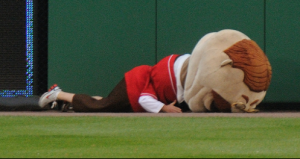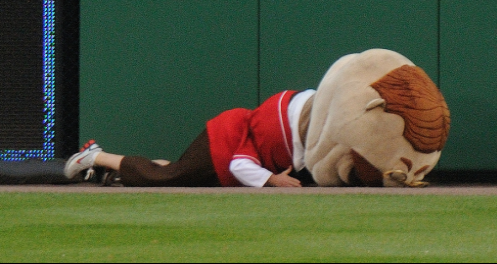 In recent marketing jibber jab, there has been an emphasis on creating stories. If the brand has a strong narrative and legacy, this may be easy to do. However, many times it seems that great stories “just happen.” For example, a Southwest Airline flight attendant gets bored with delivering the safety instructions, does a stand up bit and accidentally invents a new portion of the brand persona. A guy loses a bunch of weight in Indiana and launches a mediocre sub chain in to the fast food stratosphere.
In recent marketing jibber jab, there has been an emphasis on creating stories. If the brand has a strong narrative and legacy, this may be easy to do. However, many times it seems that great stories “just happen.” For example, a Southwest Airline flight attendant gets bored with delivering the safety instructions, does a stand up bit and accidentally invents a new portion of the brand persona. A guy loses a bunch of weight in Indiana and launches a mediocre sub chain in to the fast food stratosphere.
Other times marketers get excited and attached to a new idea without realizing it is way off message. Subway is a great example of this. During certain cycles, Subway wants to tout some of their higher fat subs. For obvious reasons, they can’t use Jared for that campaign. Whenever they have abandoned the Jared storyline for a few months, sales dip as much as 10%. Subway got lucky when they stumbled on to the inspirational Jared. Other new brands are not as serendipitous. If you have a new brand, you need to fabricate an effective and emotional story. Enter Teddy.
Such is the case of the Washington Nationals. In 2005, they were introduced to our nation’s capital after previously being known as the Montreal Expos. Like most neophyte teams, they were terrible and lost 100 games every season for many years. Sports fans thrive on a number of emotions including reflected glory, risk-taking, patriotism, and pride. At Nationals Park few of these elements were visible. Attendance was terrible with most fans opting for the nearby Baltimore Orioles.
The team management decided to implement the President’s Race. The concept was made popular by the Milwaukee Brewers “Sausage Race.” Between innings, four costumed characters dressed as bratwurst have a foot race around the field. The Nationals implemented the same idea with a local twist, the costumed characters were the four presidents featured on Mt. Rushmore: Washington, Jefferson, Lincoln, and Teddy Roosevelt. They took the concept one step further and secretly agreed that Teddy would never win the race and always lose in dramatic fashion. Each loss was completely new and had an unexpected surprise, like a monkey jumping out of the stands and tackling Teddy. For more pictures of Teddy’s failings, check out the Let Teddy Win Flickr page. After a while the fans caught on, got behind the character, and would go wild rooting “Let Teddy win!” The players even got in to it, attempting to sabotage the other presidents while they ran. T-shirt sales in support of Teddy soared.
No luck, Teddy was a lovable loser struggling against the odds, just like the Nationals. Since there were few tangible highlights to show on the news, the president’s race became a part of the local coverage. In addition it allowed the fans to feel the emotions that had been eluding them, reflected glory, risk-taking, pride, and of course patriotism. Teddy became a team story, which was essential because there was no brand legacy to reflect on during hard times. Most importantly he gave fans something to cheer for.
It contained all of the elements of Heath and Heath’s SUCCES formula It was simple, unexpected (how does Teddy lose?), concrete, credible, emotional, and a great story. With every story there is a beginning, middle, and end.In 2012, the Washington Nationals had their first winning season, first division title, and first playoff birth.
On the last day of the season, Teddy won.
